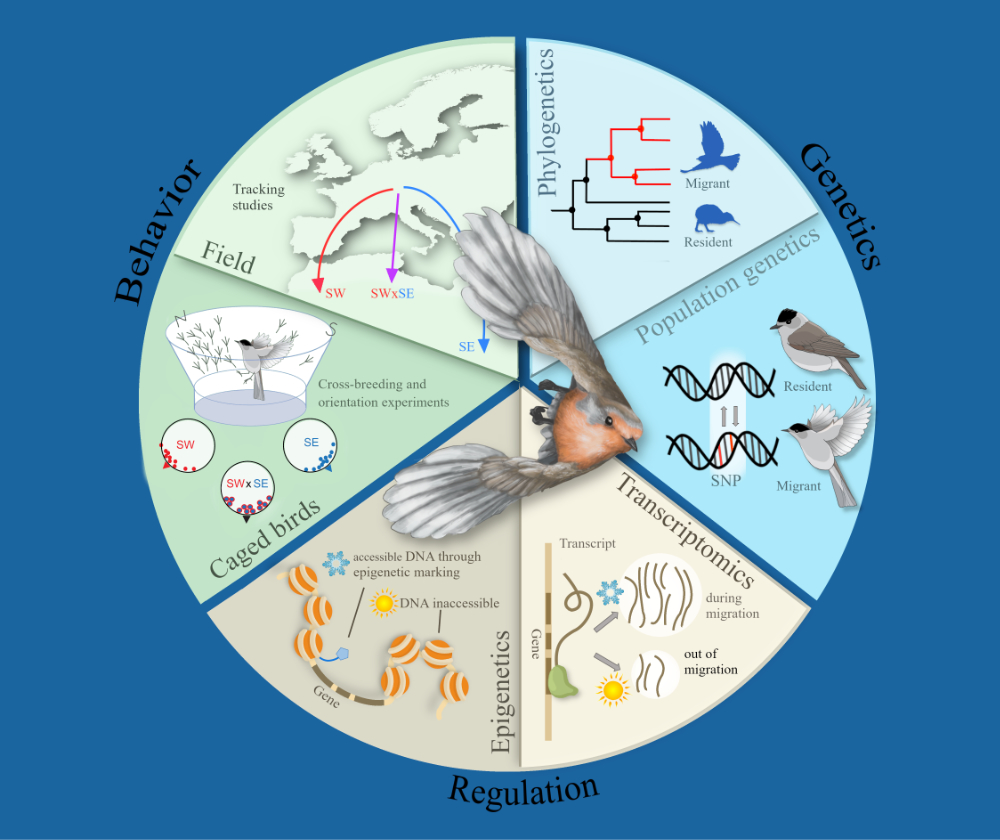Speaker
Description
Corinna Langebrake, Javier Pérez-Tris, Juan Carlos Illera, Georg Manthey, Miriam Liedvogel
Bird migration evolved as an adaptation to seasonally changing habitats. Migratory behaviour can vary within the same species in case of partial migratory behaviour, i.e. one population (or individual) is migratory and another one is resident. Species that exhibit a wide variety of migratory phenotypes provide valuable systems to understand the evolutionary drivers behind different phenotypes and how populations adapt to habitats with distinct seasonality. The European robin (Erithacus rubecula) expresses migratory behaviour in central and northern areas of the species distribution range, whereas populations in the South are predominantly resident, providing a suitable system to investigate these questions. We use high coverage whole genome re-sequencing data of 63 Iberian robins to investigate how migration behaviour affects population structure and demography, and how it affects the selection landscape in the genome. Iberian robins cluster in two populations, which coincide with migratory phenotype and geography and are characterised by distinct demographic histories. Our results suggest that the southern resident population is derived from an ancestral migratory population. Unexpectedly, tests for differential selection revealed extensive positive selection pressure acting across all chromosomes in the resident population, while selective sweeps are largely absent from migrants. We speculate that this might be an analytical artefact due to mismatching timescales between what population genomics methods can detect and the scale on which migration behaviour likely evolved in the robin. We suggest that future studies on the genomics of migration should more focally investigate different time scales to capture the full evolutionary history of migratory traits.

